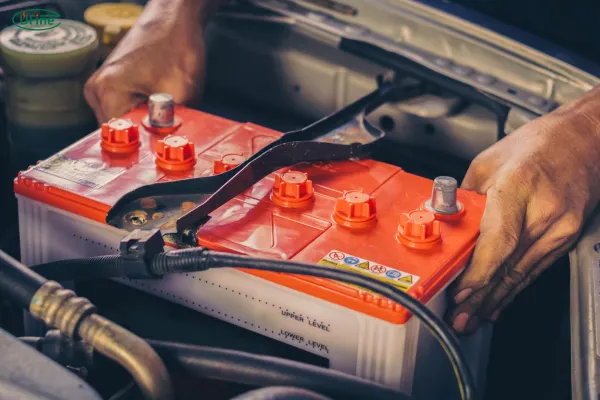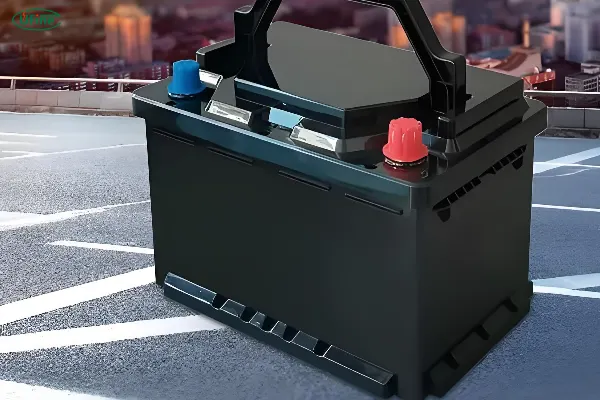Part 1. Introduction
The introduction of lithium cranking batteries represents a significant shift in the power storage landscape for applications that require high bursts of energy, such as marine engines, automotive cranking, and off-road vehicles. Traditionally, lead-acid cranking batteries have dominated these applications, but the rise of lithium-ion batteries is transforming the industry, especially with the LiFePO4 (Lithium Iron Phosphate) technology’s enhanced safety, longevity, and performance.
At Ufine Battery, we have 17 years of expertise in crafting custom lithium battery solutions for various industries. In this article, we will delve deep into the technical aspects of lithium cranking batteries, analyze their performance parameters, weigh the benefits and limitations, and offer insights into when these batteries are a viable solution for your application.
Part 2. What is a lithium cranking battery?
A lithium cranking battery is specifically designed to deliver high power output in short bursts, such as during the engine startup process. These batteries are typically based on LiFePO4 technology, which ensures greater thermal stability, longer lifespan, and improved safety compared to traditional lithium-ion chemistries.
Key characteristics of lithium cranking batteries include:
- High discharge rates for reliable engine starting
- Lightweight compared to lead-acid batteries
- Longer cycle life and reduced maintenance requirements
- Faster charging times with higher efficiency
A Comparative Analysis of LiFePO4 vs. Lead Acid
Part 3. Performance parameters of lithium cranking batteries
1. Cranking Power (CCA – Cold Cranking Amps)
Cold Cranking Amps (CCA) is a critical specification for lithium cranking batteries, as it defines the maximum current a battery can supply for 30 seconds at 0°F (-18°C) without dropping below a minimum voltage. Lithium cranking batteries typically provide higher CCA ratings than lead-acid batteries, meaning they can deliver higher bursts of power for engine starts in cold temperatures.
For example, a 12V lithium cranking battery with 1000A CCA will perform better than a traditional lead-acid battery of the same size, even in extreme conditions.
2. Voltage and Capacity (Ah and Wh)
Lithium cranking batteries are available in various voltages and capacities to suit different applications. Typical configurations include:
- 12V batteries with capacities ranging from 20Ah to 100Ah for smaller engines and marine applications.
- 24V and 48V batteries for heavy-duty engines, off-road vehicles, and high-power machinery.
The capacity (Ah) determines how long the battery can supply current before needing a recharge, while the energy content (Wh) provides an understanding of the overall stored energy. The energy density of lithium batteries is significantly higher than that of lead-acid batteries, meaning a smaller and lighter lithium battery can store the same amount of energy as a much larger lead-acid alternative.
3. Cycle Life
One of the most compelling advantages of lithium cranking batteries is their cycle life. While a traditional lead-acid cranking battery lasts for about 500 to 1,000 cycles, a lithium cranking battery can last between 3,000 to 5,000 cycles, making them far more durable and cost-effective over time. For heavy-duty applications where frequent engine starts are necessary, this extended lifespan is a significant advantage.
Part 4. Key advantages of lithium cranking batteries

1. Weight and Space Efficiency
Lithium cranking batteries are much lighter than traditional lead-acid batteries, often weighing one-third to one-half of the equivalent lead-acid battery. This makes them ideal for space-constrained applications like boats, motorcycles, and RV systems, where minimizing weight and maximizing available space is crucial.
2. Superior Charging and Efficiency
Lithium cranking batteries feature a high charge efficiency (typically 90-95%), compared to lead-acid batteries, which only offer 80-85% efficiency. This translates into faster and more complete energy usage from the battery. Additionally, lithium batteries have the ability to charge at a much faster rate, reducing downtime and allowing for more operational hours per day.
3. Resistance to Temperature Extremes
Lithium cranking batteries maintain consistent performance in both high and low temperatures. While traditional lead-acid batteries can experience significant drops in performance in extreme cold (especially below freezing), lithium batteries remain operational, ensuring reliable engine cranking in cold climates.
4. Environmental and Safety Benefits
Unlike lead-acid batteries, lithium cranking batteries do not contain harmful chemicals such as lead or sulfuric acid, making them more environmentally friendly. Furthermore, LiFePO4 batteries are known for their thermal stability and intrinsic safety, reducing the risks of thermal runaway and fire hazards.
Part 5. When is a lithium cranking battery not suitable?
While lithium cranking batteries offer many benefits, there are certain applications and scenarios where they may not be the best choice:
1. Low-Cost Budget Applications
For applications where cost is the most critical factor and the battery is used intermittently, such as backup power for low-load systems, a lead-acid battery may still be a more economical option despite its shorter lifespan. Lithium cranking batteries are generally 3-4 times more expensive upfront.
2. Systems Without Compatible Charging Infrastructure
Lithium batteries require specialized chargers designed to handle the specific charging profile of lithium-ion batteries. If your system does not support lithium battery charging or if you’re not ready to upgrade your charging infrastructure, it may not be worth the investment in a lithium cranking battery.
3. High-Discharge Applications with Variable Loads
Some off-grid or remote applications that require constant high power output with fluctuating energy demands might face challenges with lithium cranking batteries. While lithium batteries are excellent at providing high burst power, they may struggle with prolonged high-discharge scenarios that demand sustained current over time.
4. Environments Without Temperature Management
Although lithium cranking batteries perform well in extreme temperatures, they do require certain temperature conditions for optimal performance. Without proper thermal management (such as cooling systems or heated enclosures), a lithium cranking battery might be less effective in extremely hot environments compared to a lead-acid battery.
Part 6. Final words
Lithium cranking batteries are undeniably a game-changer for applications requiring reliable engine starting, especially in marine, automotive, and off-road vehicles. They offer several advantages, including lighter weight, longer lifespan, faster charging, and superior cold-weather performance. However, they are not a one-size-fits-all solution and may not be suitable for low-budget applications or systems without compatible charging infrastructure.
If you are considering a custom lithium cranking battery solution, Ufine Battery offers tailored designs that meet your specific voltage, capacity, and application needs. With our extensive experience in the lithium battery industry, we can provide you with the ideal battery solution for your unique requirements. Contact us today to discuss how we can help you upgrade to a high-performance, cost-effective lithium cranking battery.
Part 7. FAQs
-
How does a lithium cranking battery compare to a lead-acid battery?
Lithium cranking batteries are lighter, more durable, and offer faster charging and better cold-weather performance than lead-acid batteries. They also last much longer—up to 5,000 cycles compared to 1,000 cycles for lead-acid batteries. -
Can lithium cranking batteries be used for all engine types?
Yes, lithium cranking batteries can be used in most marine, automotive, and RV engines, as well as other applications that require reliable engine starting. However, you should ensure your charging system is compatible with lithium-ion technology. -
Do lithium cranking batteries require special maintenance?
Download insurance provides the product download service. t can insure you to download the purchased program when you need to reinstal within 24months. -
What is the difference between individual license and team license?
While lithium cranking batteries require less maintenance than lead-acid batteries, they do need a Battery Management System (BMS) to ensure safe charging and discharging. Additionally, it’s important to avoid extreme temperature conditions without proper temperature management. -
Are lithium cranking batteries safer than lead-acid batteries?
Yes, LiFePO4 lithium cranking batteries are safer than traditional lead-acid batteries.
Related Tags:
More Articles

How to Choose the Best Floor Scrubber Battery for Commercial Cleaning?
Selecting the ideal floor scrubber battery ensures a long runtime, rapid charging, and minimal maintenance for efficient commercial cleaning operations.
Battery for Blower vs Battery for Leaf Vacuum: Which One Should You Choose?
Battery for blower vs leaf vacuum—learn the key differences in power, fit, and runtime to choose the right battery for your outdoor tool needs.
How to Choose the Right Battery for Blower?
Choosing the right blower battery? Consider voltage, capacity, chemistry & usage. This guide helps match the best battery for peak performance.
How to Choose the Best Insulated Battery Box for Lithium Batteries?
Choosing the Best Insulated Battery Box for Lithium Batteries? Discover key factors such as size, material, and safety for optimal protection and performance.
7 Critical Elements on a Lithium Battery Shipping Label
What must be on a lithium battery shipping label? Learn 7 key elements to ensure safety, legal compliance, and correct handling across all transport modes.




